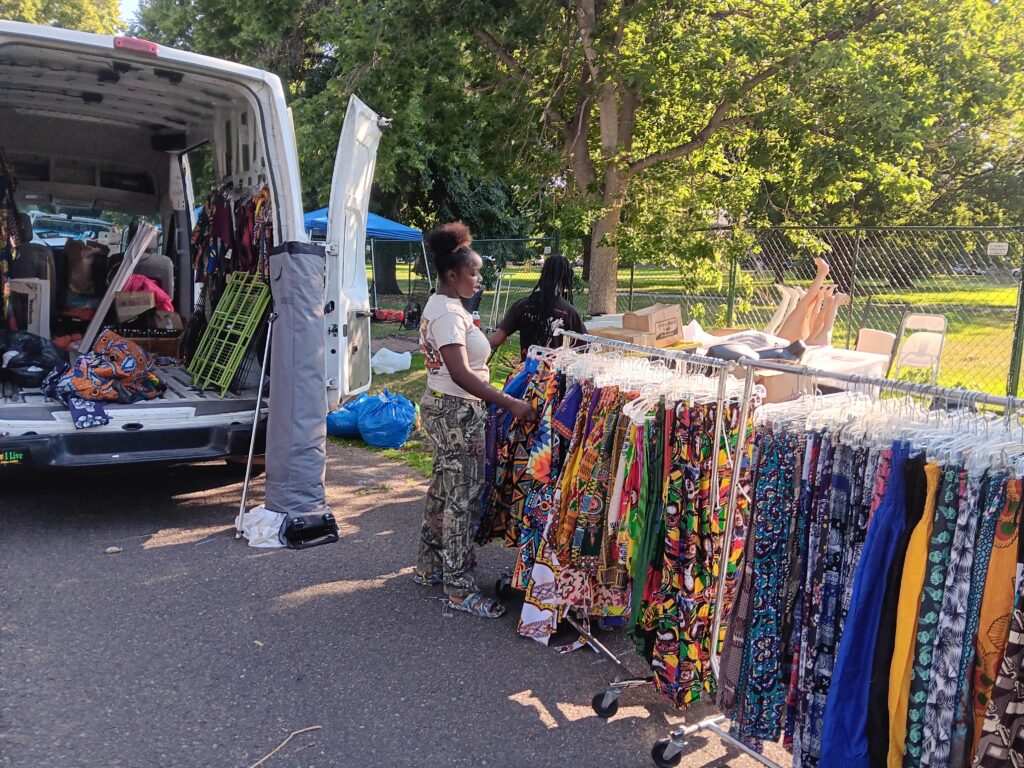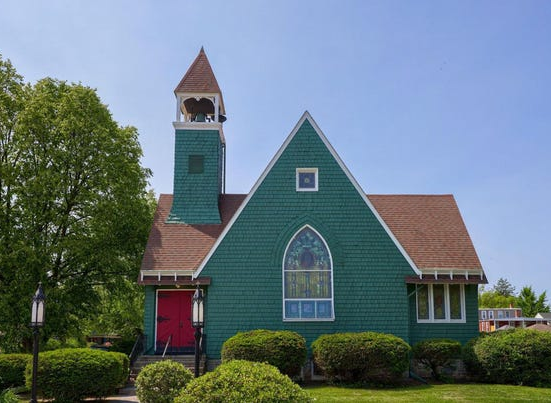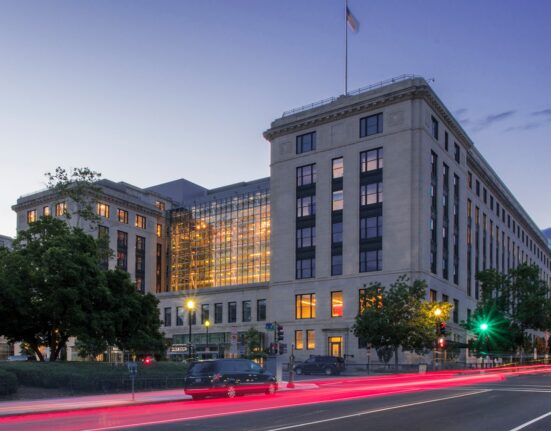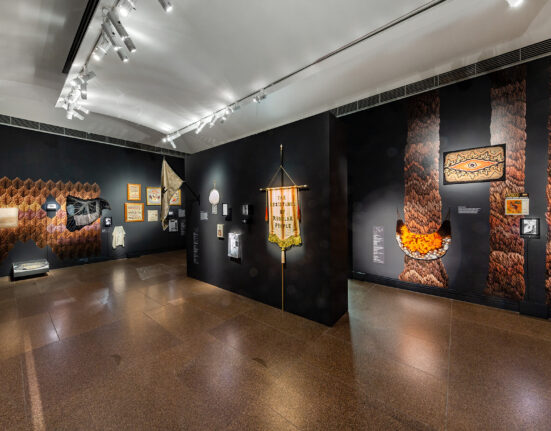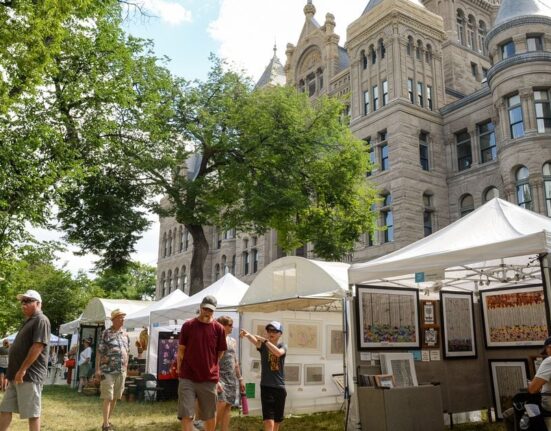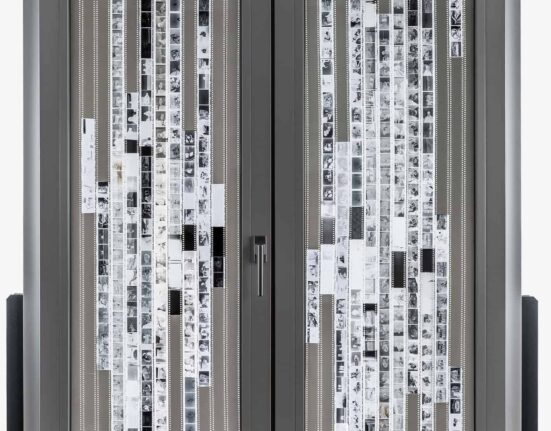This weekend’s Colorado Black Arts Festival in Denver’s City Park features more than just the visual arts.
“We’re looking to create a space for visual artists in the city of Denver,” said the festival’s Executive Director Jaleesa McIntosh, “to be able to feel welcome in celebration of their heritage and culture.”
The meaning of art isn’t limited to the visual – it includes everything from food to clothes to health – and it looks at Black braiding and other unique stylings as its own art form to be celebrated with its own section. “The Natural Haircare and beauty pavilion is … fairly new in the last three years,” McIntosh said, walking around the hot, grassy grounds. “That’s just exploring beauty with our crowns for men and women – celebrating that that’s art within itself, and how we’re able to be versatile in our hairstyles.”
She said about 15 visual artists are coming with tents to spend the weekend selling and displaying their works. One of them comes from as far as Atlanta; another from the city itself, who was among the first to set up.

Elaine Tassy/CPR News
Raphael Maximo Sanchez, a printmaker and multimedia collage artist from Ruby Hill, had his white tent looking bright before most other artists had arrived. His works, some of them about four feet by five feet, were abstract creations calling to mind Wassily Kandinsky and Joan Miro.
“I’m making prints and I’m tearing them and cutting them and I’m turning them into a collage,” he said while deciding where to arrange one of about 20 pieces he came to sell at prices up to $9,000. “I’m gluing them on top of a canvas substrate. And sometimes if I don’t like the look, I’ll start messing things up until I get what I want.”
At 70, Sanchez may have been one of the older participants. Some of the younger ones were teenage sisters, Anema and Alluren Edwards, who came from near Pensacola, Florida, and were setting up their booth.
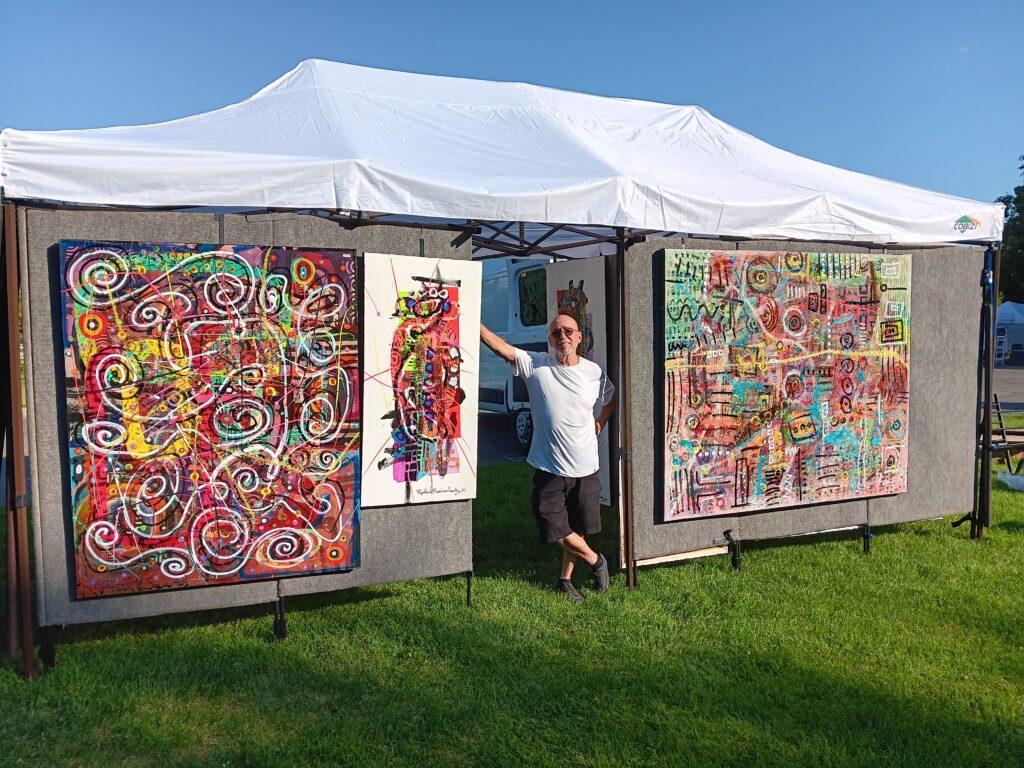
Elaine Tassy/CPR News
“We have African products. We have oils, necklaces, jewelry, all natural, just all natural things for the bodies,” said Anema, 15. On a fence near them were some upside-down, partially assembled mannequins. “We’re going to be putting clothes on it later on,” said Alluren, 14. “Most of our clothes are Afrocentric.”
She said her uncles and grandmother in Nigeria make the clothes and send them to them in Florida. Then they sell them and send the money back to them and the process continues. The sisters were perfecting the placement of brightly colored draw-string pants on a clothing rack. “It’s a family business,” Anema said.
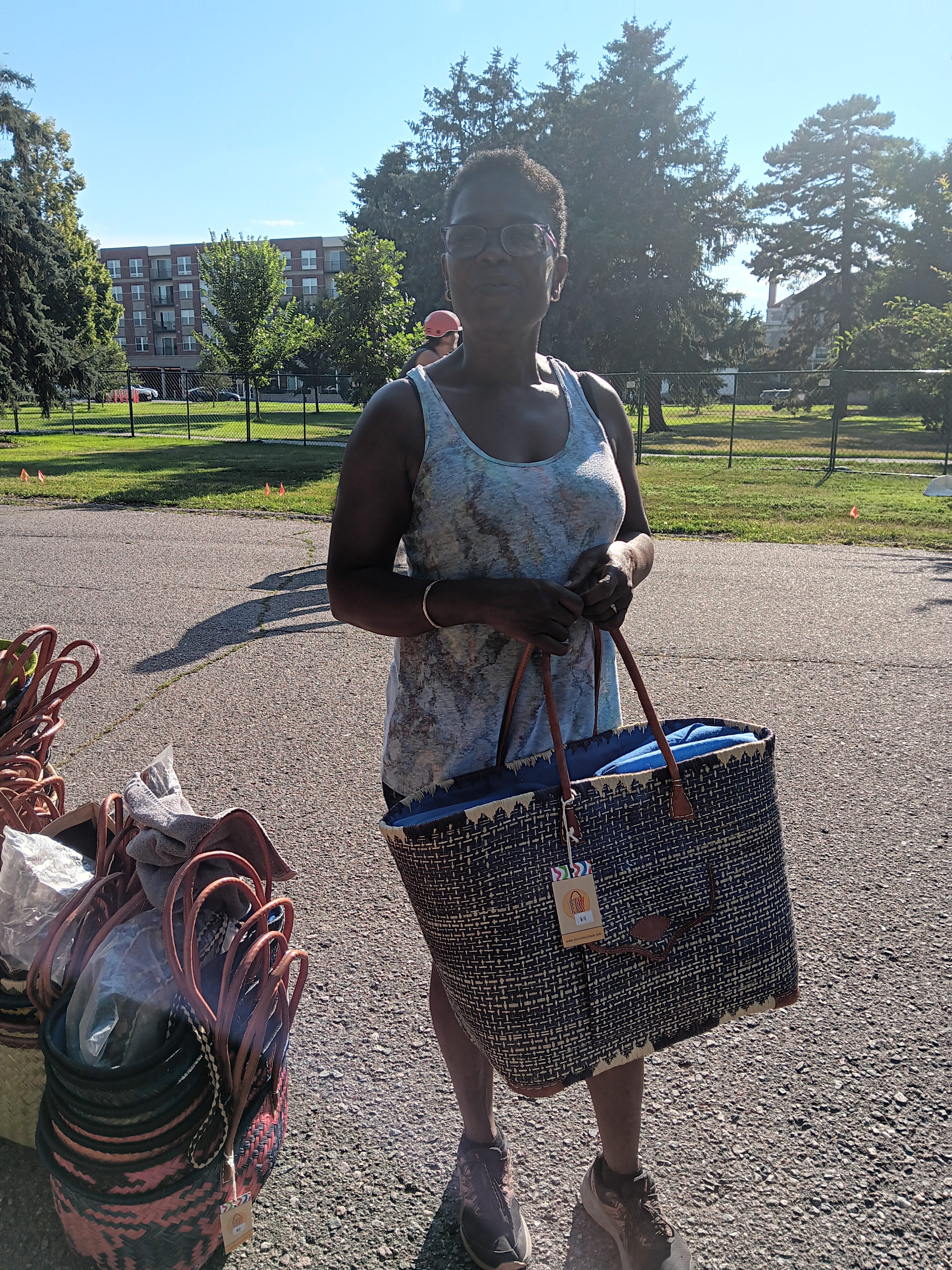
Elaine Tassy/CPR News
This festival also includes a cooking competition, some food trucks, and l a pavilion for people to talk about health – that’s the tent under which longtime nurse Elerie Archer sits, trying to keep cool as temperatures neared 100 degrees.
“For the health and wellness pavilion, we really want to spotlight the interactive portion of it that people can come in, they can interact with our vendors, so everything is hands-on interactive.” She said people can learn to do CPR using their hands only. “We’re also focusing on healthy eating habits because food heals our body.”
McIntosh – who said she is a singer not quite ready for her solo at the festival – said a stage is set up for a gospel choir. As she walked around the western edge of City Park, she stopped for a chat with Akua Fenn who now lives in Phoenix. She said she spent two days driving to Denver, breaking the trip up with an overnight in Santa Fe.
Fenn was organizing dozens of woven raffia bags made by Ghanaian craftswomen. She said it was her first time selling at the festival.
“I’m from Ghana and I work with local women there. So we support 20 women where they help me. I do all the, how do you call it, the design. And so they make it and then after we buy it all back from them.” Surrounding her were several shapes and styles of bags, with leather handles and intricately sewn or woven designs, made with straw and raffia.
McIntosh said she hopes the number of artists who participate will continue increasing as it has been, slowly, in recent years at the festival, which ends on Sunday. “We’re looking to expand and grow,” she said, “as we make more connections in the community with local artists.”

